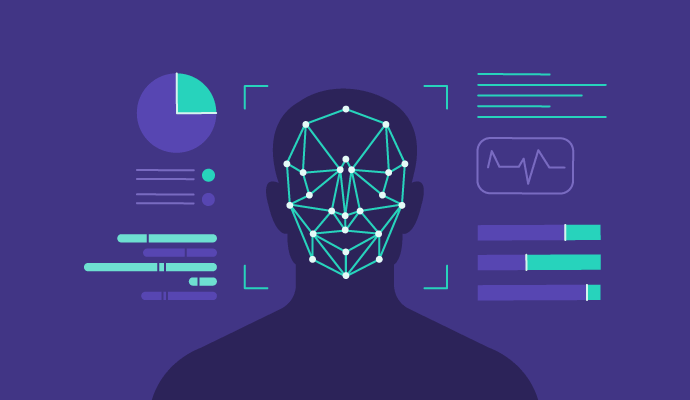The Evolution of Face Recognition with Neural Networks: From DeepFace to ArcFace and Beyond

How deep learning transformed face recognition from a laboratory curiosity to everyday technology
Face recognition has undergone a remarkable transformation since the early 2010s, largely driven by advances in deep neural networks. What was once a computer vision challenge with limited real-world applicability has become a technology embedded in billions of devices worldwide. This article traces the key developments in neural network-based face recognition, focusing on the pivotal architectures and loss functions that made this revolution possible.
The Pre-Deep Learning Era
Before delving into deep learning approaches, it's important to understand the landscape of face recognition in the pre-deep learning era. Traditional methods relied on handcrafted features (such as LBP and Gabor filters) combined with dimensionality reduction techniques like PCA and LDA. These methods worked reasonably well under controlled conditions but struggled with the variations encountered in real-world environments, including changes in lighting, pose, age, occlusion, and facial expressions.
The turning point came with the emergence of large-scale datasets and increased computational power, particularly through GPUs, which enabled the training of deep neural networks on millions of facial images.
The Deep Learning Revolution Begins
DeepFace: Pioneering Deep Learning for Face Recognition
In 2014, Facebook's DeepFace system demonstrated that deep learning could achieve near-human performance on face recognition tasks. DeepFace utilized a 3D face alignment system followed by a deep convolutional neural network trained on 4 million facial images from 4,030 subjects. The system achieved 97.35% accuracy on the Labeled Faces in the Wild (LFW) benchmark, reducing the error rate of previous state-of-the-art methods by 27%.
DeepFace introduced an interesting architectural choice: locally connected layers instead of standard fully connected layers. These layers learned different features at different spatial positions, though this approach later fell out of favor due to parameter inflation.
DeepID and the Multi-Scale Approach
Around the same time, the DeepID family of networks emerged as another influential approach. The original DeepID network used four convolutional layers with a softmax loss function. Its successor, DeepID2, innovated by combining identification loss (classifying identities correctly) with verification loss (directly reducing distances between same-identity features).
The most effective innovation of the DeepID approach was using multiple patches extracted from different facial regions at different scales. Some implementations used up to 60 different networks processing various facial regions, with their outputs combined into a high-dimensional feature vector that was then used with a Joint Bayesian classifier for verification.
The Rise of Triplet Loss and FaceNet
In 2015, Google introduced FaceNet, which took a fundamentally different approach. Instead of using classification loss, FaceNet employed a triplet loss function that directly learned a Euclidean embedding where distances correspond to face similarity.
The triplet loss operates on triplets of examples:
- An anchor face image
- A positive example of the same person
- A negative example of a different person
The loss function pulls the anchor and positive closer together while pushing the anchor and negative further apart in the embedding space.
FaceNet was remarkable for its scale: it used a 22-layer deep CNN trained on a massive dataset of 200 million images of 8 million people. This enormous scale allowed it to achieve 99.63% accuracy on LFW, essentially solving the benchmark and ending the years-long competition on this dataset.
Refining the Loss Function: The Margin-Based Approach
As research progressed, it became clear that the loss function played a crucial role in creating highly discriminative face embeddings. The next breakthrough came with the introduction of margin-based loss functions.
From Softmax to Angular Margins
Traditional softmax loss used for classification tends to create features that are separable but not necessarily discriminative enough for open-set recognition tasks (where test identities are not present in the training set). Researchers discovered that adding a margin to the decision boundary could significantly improve feature discriminability.
The evolution proceeded through several key developments:
- SphereFace (2018) introduced an angular margin to the softmax loss, but its optimization was somewhat complex.
- CosFace (2018) directly added a cosine margin to the target logit, with simpler and more stable optimization.
- ArcFace (2019) became the most influential of these margin-based approaches by adding an angular margin directly in the angle space.
ArcFace: Additive Angular Margin Loss
ArcFace's key innovation was its modified loss function, which adds a geometric margin in the angular space. The formulation provides more intuitive and stable convergence compared to earlier approaches.
The ArcFace loss function ensures that embeddings of different identities are separated by a clear angular margin, creating more discriminative features especially valuable for handling unseen identities during training.
The effectiveness of ArcFace was demonstrated through extensive experiments across multiple network architectures (MobileNet, Inception-ResNet-v2, DenseNet, etc.) and datasets. On the challenging MegaFace benchmark, ArcFace achieved 98.36% accuracy, becoming the state-of-the-art method at the time of its publication.
Advances in Face Detection: RetinaFace and SCRFD
While much research focused on face recognition itself, parallel advances in face detection were equally crucial for end-to-end systems.
RetinaFace: Dense Face Localization
In 2019, RetinaFace introduced a single-stage dense face detection approach that achieved state-of-the-art results on the WiderFace dataset. RetinaFace's key innovation was its multi-task learning framework that simultaneously predicted:
- Face bounding boxes
- Facial landmarks (5 points)
- Dense 3D face correspondence information
The inclusion of extra supervision signals through landmark points and 3D face modeling significantly improved detection accuracy, particularly for challenging cases like small, blurred, or occluded faces.
RetinaFace employed a Feature Pyramid Network (FPN) backbone to handle faces at different scales effectively. The self-supervised multi-task learning approach allowed the model to learn more robust representations by sharing features across related tasks.
SCRFD: Efficient Face Detection through Resource Redistribution
More recently, Sample and Computation Redistribution for Efficient Face Detection (SCRFD) addressed the efficiency-accuracy tradeoff in face detection. SCRFD introduced two key strategies:
- Sample Redistribution (SR): Increasing training samples for small faces, which are typically the most challenging cases. This was achieved through an expanded crop strategy ([0.3, 2.0] scale range instead of the traditional [0.3, 1.0]).
- Computation Redistribution (CR): Using neural architecture search to optimally allocate computational resources across the backbone, neck, and head of the network.
These strategies allowed SCRFD to achieve excellent performance on hard cases (small faces) while maintaining high efficiency—crucial for real-time applications on resource-constrained devices.
Building a Complete Face Recognition System
A complete face recognition pipeline typically involves four components:
- Face detection (e.g., RetinaFace or SCRFD)
- Face alignment using detected landmarks
- Face representation (feature embedding) using models like ArcFace
- Face matching by comparing feature vectors
The combination of RetinaFace for detection and ArcFace for recognition has become a popular and effective approach for building high-performance face recognition systems. The InsightFace library, which includes implementations of both methods, has made these advances accessible to practitioners worldwide.
Current Challenges and Future Directions
Despite remarkable progress, face recognition with neural networks still faces several challenges:
- Robustness to adversarial attacks: Research has shown that face recognition systems are vulnerable to carefully crafted perturbations that are imperceptible to humans. Developing more robust models is an ongoing research area.
- Bias and fairness: Models can exhibit performance disparities across different demographic groups.
- Privacy concerns: The ability to identify individuals raises important privacy considerations that need to be addressed through technical and policy solutions.
- Efficiency for edge devices: While models like SCRFD have improved efficiency, deploying accurate face recognition on resource-constrained devices remains challenging.
Conclusion
The journey of face recognition with neural networks has been one of rapid progress and continuous innovation. From the early breakthroughs of DeepFace and DeepID to the refined loss functions of ArcFace and efficient detection of RetinaFace and SCRFD, each advancement has built upon previous work to create increasingly capable systems.
What makes this progress particularly remarkable is how quickly these research advances have been translated into practical applications. Today, face recognition technology is embedded in billions of smartphones, used at border controls, and employed in countless other applications that were unimaginable just a decade ago.
As research continues, we can expect further improvements in efficiency, robustness, and fairness—making face recognition an even more reliable and trustworthy technology in the years to come.
Take the First Step Towards Face Swap and Recognition Intelligent

